($50): 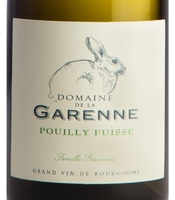 Tasting this Pouilly-Fuissé side-by-side with Domaine de La Garenne’s fine Mâcon wines, you easily see the differences between those two appellations, even though they abut one another in places. Someone clearly knew where to draw the lines. Always a popular Chardonnay-based wine in the U.S.,… Read more
Tasting this Pouilly-Fuissé side-by-side with Domaine de La Garenne’s fine Mâcon wines, you easily see the differences between those two appellations, even though they abut one another in places. Someone clearly knew where to draw the lines. Always a popular Chardonnay-based wine in the U.S.,… Read more
Category Archives: Publication
Domaine de La Garenne, Mâcon-Solutré-Pouilly (Burgundy, France) 2022
($33): 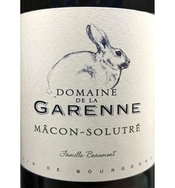 Comparing this wine, from the southern part of the Mâconnais, to Domaine de La Garenne’s Mâcon-Azé, which is located in the north of the appellation, shows the fabulous diversity within the Mâconnais. The bolder Mâcon-Solutré-Pouilly delivers more weight and more stoniness without losing any freshness. … Read more
Comparing this wine, from the southern part of the Mâconnais, to Domaine de La Garenne’s Mâcon-Azé, which is located in the north of the appellation, shows the fabulous diversity within the Mâconnais. The bolder Mâcon-Solutré-Pouilly delivers more weight and more stoniness without losing any freshness. … Read more
Domaine de La Garenne, Mâcon Azé (Burgundy, France) 2022
($33): 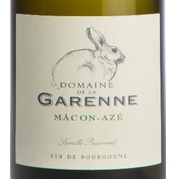 It is worth repeating — the Mâconnais is the place to fine excellent white wines, especially from the 2022 vintage, at reasonable prices. As more and more growers discover the beauty of this part of Burgundy, we will see wines, like this one, that provide greater specificity regarding the origin of the grapes. … Read more
It is worth repeating — the Mâconnais is the place to fine excellent white wines, especially from the 2022 vintage, at reasonable prices. As more and more growers discover the beauty of this part of Burgundy, we will see wines, like this one, that provide greater specificity regarding the origin of the grapes. … Read more
Maison Auvigue, Saint-Véran (Burgundy, France) “Chênes” 2022
($35): 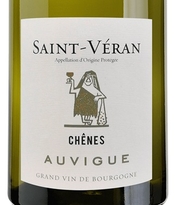 Saint-Véran, which lies adjacent to Pouilly-Fuissé in the Mâconnais, lies between single village Mâcon wines, like Mâcon-Azé, and Pouilly-Fuissé in the appellation hierarchy. That is not to say you can’t find a Mâcon-Azé that is more stylish and enjoyable than a Saint-Véran, nor does it mean that every Pouilly-Fuissé is superior to every Saint-Véran. … Read more
Saint-Véran, which lies adjacent to Pouilly-Fuissé in the Mâconnais, lies between single village Mâcon wines, like Mâcon-Azé, and Pouilly-Fuissé in the appellation hierarchy. That is not to say you can’t find a Mâcon-Azé that is more stylish and enjoyable than a Saint-Véran, nor does it mean that every Pouilly-Fuissé is superior to every Saint-Véran. … Read more
Domaine Merlin, Saint-Véran (Burgundy, France) Le Grand Bussière 2022
($33): 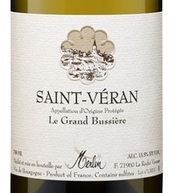 Despite the location of the vineyard, Le Grand Bussière, in the village of Fuissé, the appellation is Saint-Véran because Fuissé (the village) spans two appellations, Pouilly-Fuissé and Saint-Véran. (Who ever said that Burgundy was simple to understand?) This edgy Saint-Véran, with its cutting stone-y quality, shows why that appellation ranks above Mâcon in prestige. … Read more
Despite the location of the vineyard, Le Grand Bussière, in the village of Fuissé, the appellation is Saint-Véran because Fuissé (the village) spans two appellations, Pouilly-Fuissé and Saint-Véran. (Who ever said that Burgundy was simple to understand?) This edgy Saint-Véran, with its cutting stone-y quality, shows why that appellation ranks above Mâcon in prestige. … Read more
La Soufrandière, Pouilly-Vinzelles (Burgundy, France) Les Quarts 2022
($60): 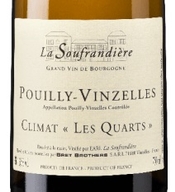 There is no better producer in the Mâconnais than La Soufrandière, a family domaine owned by the Bret Brothers. The brothers also buy grapes from neighbors and other growers who have the same meticulous philosophy as they and bottle them as a négociant under the label, Bret Brothers. … Read more
There is no better producer in the Mâconnais than La Soufrandière, a family domaine owned by the Bret Brothers. The brothers also buy grapes from neighbors and other growers who have the same meticulous philosophy as they and bottle them as a négociant under the label, Bret Brothers. … Read more
Domaine Merlin, Pouilly-Fuissé Premier Cru (Burgundy, France) Les Chevrières 2022
($72): 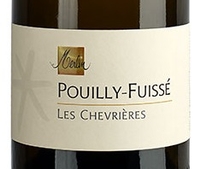 The French wine authorities have finally identified and codified Premier Cru vineyards for Pouilly-Fuissé so that moniker along with the vineyard name is now appearing on the label, just as in the rest of Burgundy. Unsurprisingly, the elevation of some vineyards to Premier Cru classification has brought with it an elevation of price. … Read more
The French wine authorities have finally identified and codified Premier Cru vineyards for Pouilly-Fuissé so that moniker along with the vineyard name is now appearing on the label, just as in the rest of Burgundy. Unsurprisingly, the elevation of some vineyards to Premier Cru classification has brought with it an elevation of price. … Read more
Domaine J. A. Ferret, Pouilly-Fuissé Premier Cru (Burgundy, France) Les Ménétrières “Hors Classe” 2022
($93, Kobrand Wine & Spirits): 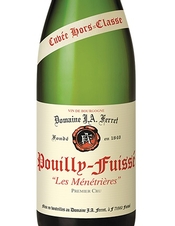 Maison Louis Jadot, one of Burgundy’s top producers, recently purchased Domaine J. A. Ferret, one of stars of Pouilly-Fuissé. Under Jadot’s leadership, the quality of the Ferret wines, already top-notch, has risen even more. (Sadly, so has the price.) … Read more
Maison Louis Jadot, one of Burgundy’s top producers, recently purchased Domaine J. A. Ferret, one of stars of Pouilly-Fuissé. Under Jadot’s leadership, the quality of the Ferret wines, already top-notch, has risen even more. (Sadly, so has the price.) … Read more
Domaine Rijckaert, Mâcon Lugny (Burgundy, France) Les Crays Vers Vaux Vieilles Vignes 2022
($30): 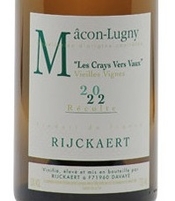 Florent Rouve, owner of Domaine Rijckaert, explains that he wants to “maintain the freshness and purity” of the grapes, so eschews aging in new oak barrels and batonnâge (stirring of the lees), which tends to increase richness of the wines. … Read more
Florent Rouve, owner of Domaine Rijckaert, explains that he wants to “maintain the freshness and purity” of the grapes, so eschews aging in new oak barrels and batonnâge (stirring of the lees), which tends to increase richness of the wines. … Read more
Domaine Rijckaert, Macon Bussières (Burgundy, France) Au Clos Vieilles Vignes 2022
($30): 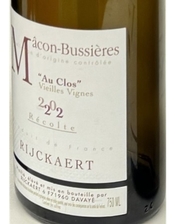 The Mâconnais, a less prestigious part of Burgundy south of the well-heeled Côte d’Or, is the place to find superb Chardonnay-based wines. When the wine come from a single village, such as Bussières or Lugny to name just two, the village name can appear on the label instead of the more generic, Mâcon-Villages. … Read more
The Mâconnais, a less prestigious part of Burgundy south of the well-heeled Côte d’Or, is the place to find superb Chardonnay-based wines. When the wine come from a single village, such as Bussières or Lugny to name just two, the village name can appear on the label instead of the more generic, Mâcon-Villages. … Read more
Maison Louis Latour, Viré-Clessé (Burgundy, France) 2022
($38, Louis Latour, USA): 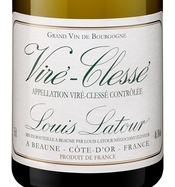 Appellations within the Mâconnais, like Viré-Clessé, are the place to go to find affordable, or at least more affordable, white Burgundy. Viré and Clessé, two adjacent villages whose wines previously were labeled as Mâcon-Viré and Mâcon-Clessé, convinced French wine regulators that their wines were distinctive enough to merit their own appellations. … Read more
Appellations within the Mâconnais, like Viré-Clessé, are the place to go to find affordable, or at least more affordable, white Burgundy. Viré and Clessé, two adjacent villages whose wines previously were labeled as Mâcon-Viré and Mâcon-Clessé, convinced French wine regulators that their wines were distinctive enough to merit their own appellations. … Read more
Auvigue, Pouilly-Fuissé (Burgundy, France) “Les Villages” 2022
($49): 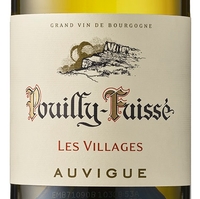 The buzz engulfing Pouilly-Fuissé comes from the well-deserved designation of premier cru vineyards. So, now that distinction will appear on labels. But let’s not forget the village wines. A village Pouilly-Fuissé from a top house, like Auvigue, will compete with those labeled premier cru from less talented producers. … Read more
The buzz engulfing Pouilly-Fuissé comes from the well-deserved designation of premier cru vineyards. So, now that distinction will appear on labels. But let’s not forget the village wines. A village Pouilly-Fuissé from a top house, like Auvigue, will compete with those labeled premier cru from less talented producers. … Read more
Cantine Ermes, Sicilia DOC (Sicily, Italy) Nero d’Avola “Epicentro” 2018
($24): 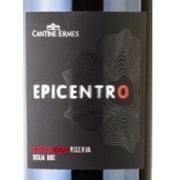 Cantine Emes’ unnecessarily heavy bottle and a label proclaiming Riserva gives a good indication that this Nero d’Avola will be at the more muscular end of the spectrum of wine that variety can produce. The wine is bold, but not too pushy. … Read more
Cantine Emes’ unnecessarily heavy bottle and a label proclaiming Riserva gives a good indication that this Nero d’Avola will be at the more muscular end of the spectrum of wine that variety can produce. The wine is bold, but not too pushy. … Read more
Regaleali, Sicilia DOC (Sicily, Italy) Nero d’Avola 2020
($16): 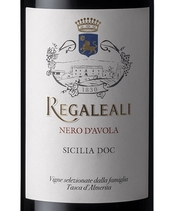 Regaleali, owned by the Tasca d’Almerita family, one of the most famous and important producers in Sicily, rarely fails. They certainly didn’t with this one, a harmonious balance of berry fruit and savory notes enrobed with a supple and suave texture. … Read more
Regaleali, owned by the Tasca d’Almerita family, one of the most famous and important producers in Sicily, rarely fails. They certainly didn’t with this one, a harmonious balance of berry fruit and savory notes enrobed with a supple and suave texture. … Read more
La Pépière, Muscadet Sèvre et Maine Monnières-Saint Fiacre (Loire Valley, France) 2019
($32): 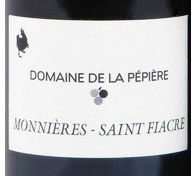 The appellation needs some explanation. But first, what needs no explanation is La Pépière, one the finest producers of Muscadet. They are so consistent, it is safe to say if you see their name on a label, you should buy the wine. … Read more
The appellation needs some explanation. But first, what needs no explanation is La Pépière, one the finest producers of Muscadet. They are so consistent, it is safe to say if you see their name on a label, you should buy the wine. … Read more
Le Rocher des Violettes, Mountlouis-sur-Loire (Loire Valley, France) “Touche-Mitaine” 2021
($28): 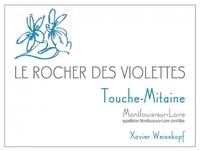 Mountlouis-sur-Loire lies across the Loire River from Vouvray and uses the same Chenin Blanc grape for its captivatingly delicious wines. Similar in style to Vouvray, they vary from dry, like this one, to sweet. A waiter at GrandCoeur, an exceptional new-wave bistro in the Marais section of Paris, recommended this one to me. … Read more
Mountlouis-sur-Loire lies across the Loire River from Vouvray and uses the same Chenin Blanc grape for its captivatingly delicious wines. Similar in style to Vouvray, they vary from dry, like this one, to sweet. A waiter at GrandCoeur, an exceptional new-wave bistro in the Marais section of Paris, recommended this one to me. … Read more
Domaine Ganevat, Côtes du Jura (France) Chardonnay “Rouchamps” 2018
($350): 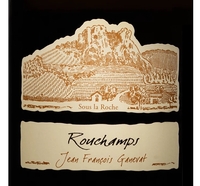 Full disclosure — I have not become enamored of the wines of the Jura because of their often-oxidized style. This one could change that because it is fresh despite having undergone four years — you read that correctly — of fermentation. … Read more
Full disclosure — I have not become enamored of the wines of the Jura because of their often-oxidized style. This one could change that because it is fresh despite having undergone four years — you read that correctly — of fermentation. … Read more
René Bouvier, Marsannay (Burgundy, France) Longeroies Vieilles Vignes 2019
($47): 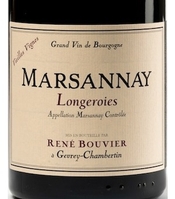 Marsannay, almost a suburb of Dijon, is the northernmost appellation of the Côtes de Nuits. Usually, wines from Burgundy’s exalted Côtes de Nuits, think Gevrey-Chambertin, Chambolle-Musigny, or Vosne-Romanée, are frightfully expensive. Marsannay has not gotten the message — yet. They will. … Read more
Marsannay, almost a suburb of Dijon, is the northernmost appellation of the Côtes de Nuits. Usually, wines from Burgundy’s exalted Côtes de Nuits, think Gevrey-Chambertin, Chambolle-Musigny, or Vosne-Romanée, are frightfully expensive. Marsannay has not gotten the message — yet. They will. … Read more
Laura Lardy, Chénas (Beaujolais, France) “La Fayarde” 2022
($30): 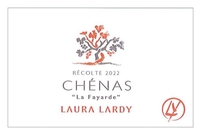 Chénas, the smallest of the 10 Crus (named villages) of the Beaujolais region, is known for producing robust wines. Laura Lardy is one of Beaujolais’ top producers. Put the two together and you get this deeply rich wine with a balancing tarriness and uplifting freshness. … Read more
Chénas, the smallest of the 10 Crus (named villages) of the Beaujolais region, is known for producing robust wines. Laura Lardy is one of Beaujolais’ top producers. Put the two together and you get this deeply rich wine with a balancing tarriness and uplifting freshness. … Read more
Viña Cobos, Mendoza (Argentina) “Cocodrilo” 2020
($29, Paul Hobbs Selections): 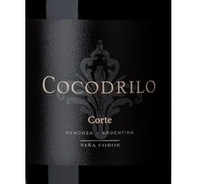 The quality is not surprisingly given this wine is part of the Paul Hobbs collection. What did catch me by surprise, however, was the price of this glossy and polished Bordeaux blend of Cabernet Sauvignon (72%), Malbec (18%), Cabernet France (5%), and Petit Verdot. … Read more
The quality is not surprisingly given this wine is part of the Paul Hobbs collection. What did catch me by surprise, however, was the price of this glossy and polished Bordeaux blend of Cabernet Sauvignon (72%), Malbec (18%), Cabernet France (5%), and Petit Verdot. … Read more
Do Not Miss the 2019 Brunellos!
Let me get straight to the point. The 2019 vintage for Brunello di Montalcino is fabulous! I make this assessment after tasting 35-plus examples of the recently bottled and released wines in New York City in November. There wasn’t a loser in the bunch. … Read more
Wine of the Week: Duckhorn Vineyards
Duckhorn Vineyards 1978 Merlot Three Palms Vineyard Napa Valley California 97
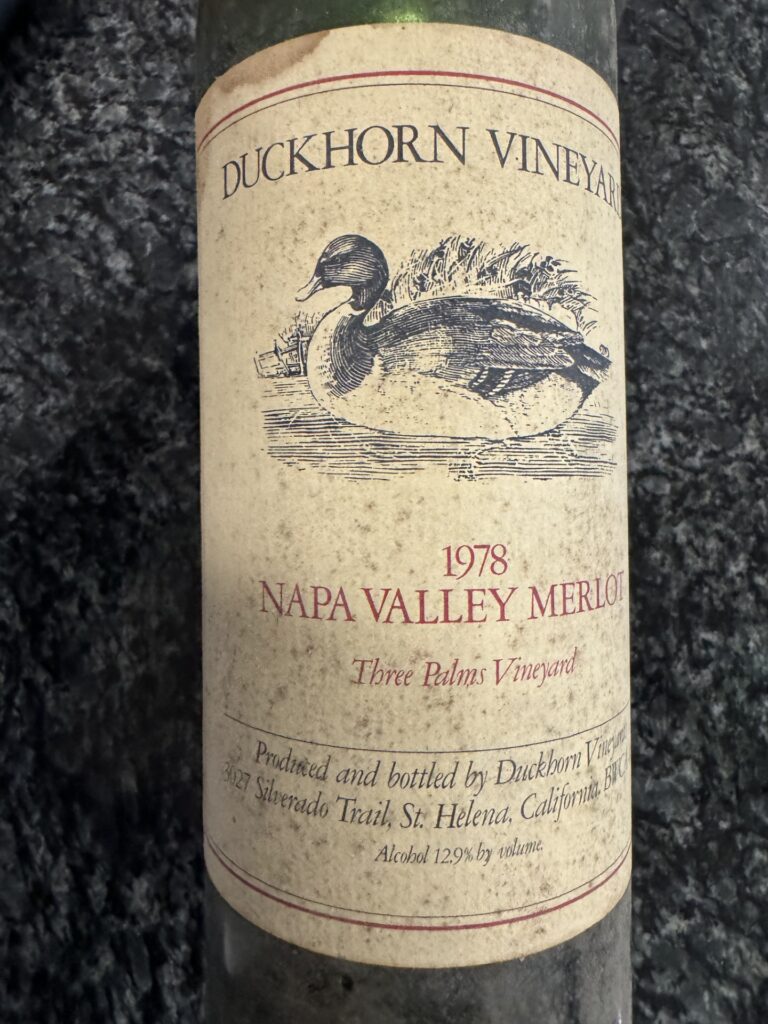
Duckhorn Vineyards, founded in 1976 by Dan and Margaret Duckhorn, released its first wines two years later, from the 1978 vintage: 6,000 bottles each of a Cabernet Sauvignon and this Merlot.… Read more
Badia a Coltibuono, Chianti Classico (Tuscany, Italy) 2020
($24): 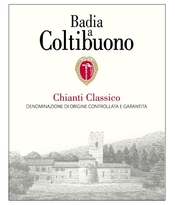 Badia a Coltibuono provides another compelling argument for the joys Chianti Classico in general. Their luscious and well-priced 2020 delivers an ideal combination of dark cherry-like fruit balanced by savory or herbal nuances, while weighing in at a modest 13.5 percent stated alcohol. … Read more
Badia a Coltibuono provides another compelling argument for the joys Chianti Classico in general. Their luscious and well-priced 2020 delivers an ideal combination of dark cherry-like fruit balanced by savory or herbal nuances, while weighing in at a modest 13.5 percent stated alcohol. … Read more
I Fabbri, Chianti Classico (Tuscany, Italy) “Terra di Lamole” 2020
($28): 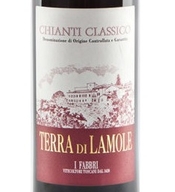 The wines from the higher, and therefore cooler, elevations, like Lamole, turned out especially well in 2020, another year with a hot and dry growing season. Lamole’s cooler climate imbued the wines, such as I Fabbri’s, with a firmness and freshness that balances the dark cherry-like nuances. … Read more
The wines from the higher, and therefore cooler, elevations, like Lamole, turned out especially well in 2020, another year with a hot and dry growing season. Lamole’s cooler climate imbued the wines, such as I Fabbri’s, with a firmness and freshness that balances the dark cherry-like nuances. … Read more
Caravaglio, Salina Bianco IGT (Aeolian Islands, Sicily, Italy) “Salina” 2022
($26): 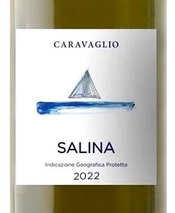 Salina is both the name of the wine and the tiny volcanic Aeolian island just north of Sicily in the Mediterranean. Barely 10 square miles in area, it has six inactive volcanos that account for its lava rich soil. Here the Malvasia di Lipari makes a riveting dry wine that electrifies the palate. … Read more
Salina is both the name of the wine and the tiny volcanic Aeolian island just north of Sicily in the Mediterranean. Barely 10 square miles in area, it has six inactive volcanos that account for its lava rich soil. Here the Malvasia di Lipari makes a riveting dry wine that electrifies the palate. … Read more
Jermann, Friuli Venezia Giulia (Italy) Pinot Grigio 2022
($25): 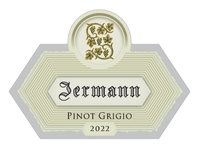 If Jermann’s captivating Pinot Grigio was your first experience with Pinot Grigio, it would be easy to understand the popularity of the category. Alas, few Pinot Grigio have the character of Jermann’s. Subtly aromatic, Jermann’s refreshing 2022 Pinot Grigio has appeal that belies its lightweight density. … Read more
If Jermann’s captivating Pinot Grigio was your first experience with Pinot Grigio, it would be easy to understand the popularity of the category. Alas, few Pinot Grigio have the character of Jermann’s. Subtly aromatic, Jermann’s refreshing 2022 Pinot Grigio has appeal that belies its lightweight density. … Read more
From Decanter Magazine: Domaine Parent: A benchmark Pommard domaine

Long-regarded as one of Burgundy’s more muscular appellations, the 2022 vintage from Domaine Parent reveal Pommard’s more refined and sensuous side.
The wines of Pommard have long suffered from a less-exalted reputation compared to the more delicate wines of neighbouring Volnay, just to the south.… Read more
Capezzana, Toscana Rosso (Tuscany, Italy) “Ugo Contini Bonacossi” 2019
($60): 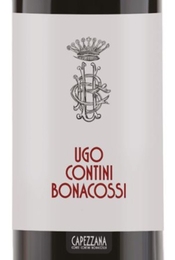 The Contini Bonacossi family owns Capezzana, Carmignano’s best producer. Ugo Contini Bonacossi, who transformed the property from the typical sharecropping agricultural endeavor of the era, into the current modern wine and olive oil producing estate, adored a particular small Sangiovese vineyard that he thought consistently produced exceptional grapes. … Read more
The Contini Bonacossi family owns Capezzana, Carmignano’s best producer. Ugo Contini Bonacossi, who transformed the property from the typical sharecropping agricultural endeavor of the era, into the current modern wine and olive oil producing estate, adored a particular small Sangiovese vineyard that he thought consistently produced exceptional grapes. … Read more
Frescobaldi, Chianti Rùfina Riserva (Tuscany, Italy) “Nipozzano” 2020
($18): 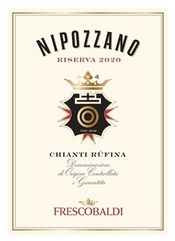 Rùfina, the smallest of the Chianti subzones, is mountainous and wild. The wines, like this one, have an appealing wildness and refinement. Frescobaldi, Rùfina’s largest and most important producer, never falters, which means that this 2020 delivers more than its price suggests. … Read more
Rùfina, the smallest of the Chianti subzones, is mountainous and wild. The wines, like this one, have an appealing wildness and refinement. Frescobaldi, Rùfina’s largest and most important producer, never falters, which means that this 2020 delivers more than its price suggests. … Read more
Villa Calcinaia, Chianti Classico (Tuscany, Italy) 2020
($21): 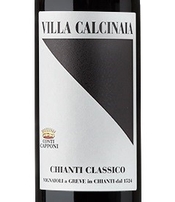 The ready-to-drink 2020 Villa Calcinaia Chianti Classico shows why Chianti Classico is so popular. Lip-smacking acidity acts as the foil for its succulent black cherry-like fruitiness. Subtle spice common to Chianti Classico adds appealing complexity, preventing monotony. Mild tannins lend support without intruding. … Read more
The ready-to-drink 2020 Villa Calcinaia Chianti Classico shows why Chianti Classico is so popular. Lip-smacking acidity acts as the foil for its succulent black cherry-like fruitiness. Subtle spice common to Chianti Classico adds appealing complexity, preventing monotony. Mild tannins lend support without intruding. … Read more
Girolamo Russo, Etna Rosso (Sicily, Italy) “‘a Rina” 2020
($34): 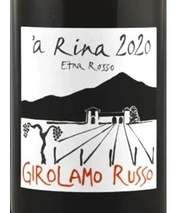 This looks like a Rosé in the glass, but fortunately it displays enormous character and complexity, so you know it’s not a rosé. Girolamo Russo, one of Etna’s top producers, makes a range of terrific wines from that mountain. This one, ‘a Rina, is a blend, and could be considered his “basic” — though there’s nothing basic about it — wine. … Read more
This looks like a Rosé in the glass, but fortunately it displays enormous character and complexity, so you know it’s not a rosé. Girolamo Russo, one of Etna’s top producers, makes a range of terrific wines from that mountain. This one, ‘a Rina, is a blend, and could be considered his “basic” — though there’s nothing basic about it — wine. … Read more
Domaine Buisson-Charles, Meursault (Burgundy, France) Vieilles Vignes 2021
($106, Martine’s Wines): 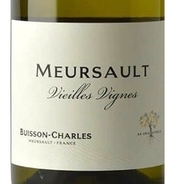 Domaine Buisson-Charles, a well-regarded Meursault-based family domaine, blends grapes from six parcels to make this stellar village wine. Some are hillside parcels that provide grapes with higher acidity, and some are lower down that imbue the grapes, and subsequent wine, with more richness. … Read more
Domaine Buisson-Charles, a well-regarded Meursault-based family domaine, blends grapes from six parcels to make this stellar village wine. Some are hillside parcels that provide grapes with higher acidity, and some are lower down that imbue the grapes, and subsequent wine, with more richness. … Read more
Dupont-Fahn, Bourgogne Blanc (Burgundy, France) Chaumes des Perrières 2020
($52): 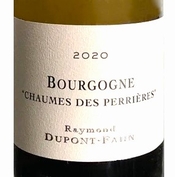 The story goes that a parcel of vines in the Merusault Perrières vineyard lost its exalted appellation classification when the owner added 10-inches or so of topsoil to replace that which had been washed away. That modification turned what is now called Chaumes des Perrières into Bourgogne Blanc — not even Meursault. … Read more
The story goes that a parcel of vines in the Merusault Perrières vineyard lost its exalted appellation classification when the owner added 10-inches or so of topsoil to replace that which had been washed away. That modification turned what is now called Chaumes des Perrières into Bourgogne Blanc — not even Meursault. … Read more
Villa Cerna, Chianti Classico Riserva (Tuscany, Italy) 2018
($32, Volio Imports): 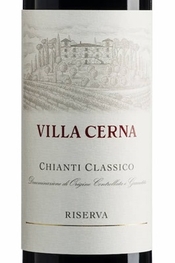 I reviewed this wine last year and jumped at the chance to revisit it since it is still available at the retail level. Spoiler alert — I like it just as much. As a reminder, the Cecchi family has two distinct estates in Chianti Classico, Villa Cerna and Villa Rosa, both in Castellina in Chianti. … Read more
I reviewed this wine last year and jumped at the chance to revisit it since it is still available at the retail level. Spoiler alert — I like it just as much. As a reminder, the Cecchi family has two distinct estates in Chianti Classico, Villa Cerna and Villa Rosa, both in Castellina in Chianti. … Read more
Villa Rosa, Chianti Classico (Tuscany, Italy) “Ribaldoni” 2018
($33, Volio Imports): 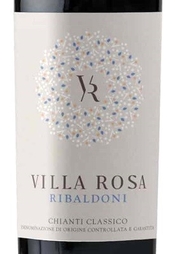 The Cecchi family purchased the Villa Rosa estate in 2015 because it was an ideal site for Sangiovese. The focus is to make a Gran Selezione, the category at the tip of the Chianti Classico quality pyramid. I suspect this Chianti Classico comes from grapes that did not make it into the Gran Selezione. … Read more
The Cecchi family purchased the Villa Rosa estate in 2015 because it was an ideal site for Sangiovese. The focus is to make a Gran Selezione, the category at the tip of the Chianti Classico quality pyramid. I suspect this Chianti Classico comes from grapes that did not make it into the Gran Selezione. … Read more
Villa Cerna, Chianti Classico (Tuscany, Italy) “Primocolle” 2020
($19, Volio Imports): 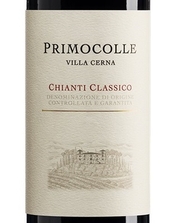 Villa Cerna is the home, and one of the estates, of the Cecchi family, one of the top producers in Tuscany. Primocolle — literally, first hill — comes from vineyards at lower elevations on the estate. The bright and juicy 2020 Primocolle is a lovely, classically proportioned Chianti Classico filled with good depth and an impeccable combination of fruity and savory notes. … Read more
Villa Cerna is the home, and one of the estates, of the Cecchi family, one of the top producers in Tuscany. Primocolle — literally, first hill — comes from vineyards at lower elevations on the estate. The bright and juicy 2020 Primocolle is a lovely, classically proportioned Chianti Classico filled with good depth and an impeccable combination of fruity and savory notes. … Read more
Ventisquero, Colchagua Valley (Chile) Carménère Apalta Vineyard “Obliqua” 2017
($71, Austral Wines): 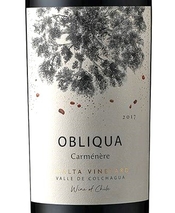 Made entirely from Carménère, arguably Chile’s signature grape, grown in the famed Apalta sub-region, this juicy bottling displays a wonderful combination of red and dark fruit with spice and other non-fruit, savory notes. Like the Vertice, the tannins are present, yet supple and not intrusive, so this hearty red is ready for mid-winter fare. … Read more
Made entirely from Carménère, arguably Chile’s signature grape, grown in the famed Apalta sub-region, this juicy bottling displays a wonderful combination of red and dark fruit with spice and other non-fruit, savory notes. Like the Vertice, the tannins are present, yet supple and not intrusive, so this hearty red is ready for mid-winter fare. … Read more
Ventisquero, Colchagua Valley (Chile) Apalta Vineyard “Vertice” 2019
($29, Austral Wines): 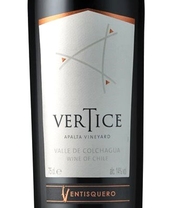 This bold blend of Syrah and Carménère, combines attractive elements of each grape. Together, it’s a harmonious blend of dark fruit, leafy notes — Carménère speaking — and smokey peppery nuances of Syrah. A suave texture allows you to enjoy this weighty, yet not overdone, wine now. … Read more
This bold blend of Syrah and Carménère, combines attractive elements of each grape. Together, it’s a harmonious blend of dark fruit, leafy notes — Carménère speaking — and smokey peppery nuances of Syrah. A suave texture allows you to enjoy this weighty, yet not overdone, wine now. … Read more
The Amazing 2022 Burgundies
Let me cut directly to the chase, or rather, the bottom line: Buy as much of the 2022 Burgundies—both red and white—as your budget allows. I give this advice after having been astonished by the results of my annual tasting trip to Burgundy in November. … Read more
Estate Argyros, Santorini (Greece) Assyrtiko 2022
($45, Diamond Wine Importers): 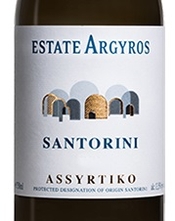 Argyros, an old family winery founded in 1903, has a stellar reputation on Santorini. After tasting this racy Assyrtiko, I see why. Many consider Assyrtiko, especially when grown on Santorini, to be Greece’s finest white wine. I don’t have a dog in that fight, but if they are all like Argyros’ 2022 I understand the claim. … Read more
Argyros, an old family winery founded in 1903, has a stellar reputation on Santorini. After tasting this racy Assyrtiko, I see why. Many consider Assyrtiko, especially when grown on Santorini, to be Greece’s finest white wine. I don’t have a dog in that fight, but if they are all like Argyros’ 2022 I understand the claim. … Read more
Haritatos Vineyard, Slopes of Aenos PGI (Greece) Mavrodaphne “Mademoiselle Haritato” 2021
($34, Diamond Wine Importers): 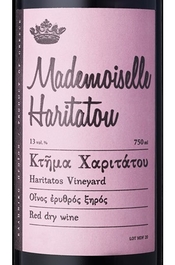 Jancis Robinson in her encyclopedic Wine Grapes (Harper Collins 2012) reports that Mvarodafni is likely the Greece’s most well-known grape because of the sweet, fortified wines made from it. Well, this is my first introduction to it, and Haritatos Vineyard stunning one is definitely not sweet, nor fortified. … Read more
Jancis Robinson in her encyclopedic Wine Grapes (Harper Collins 2012) reports that Mvarodafni is likely the Greece’s most well-known grape because of the sweet, fortified wines made from it. Well, this is my first introduction to it, and Haritatos Vineyard stunning one is definitely not sweet, nor fortified. … Read more
Alpha Estate, Amyndeon PDO (Macedonia, Greece) Xinomavro Hedgehog Vineyard 2020
($27, Diamond Wine Importers): 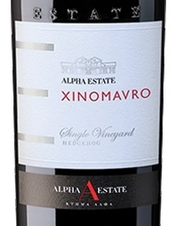 Fortunately, most people don’t translate the grape’s name, Xinomavro, (literally, sour back) before buying the wine. It is considered by many to be Greece’s most important and best red grape for red wine. Frequently described as powerful with significant tannins, the mid-weight and poised one from Alpha Estate, an organic producer, does not fit that profile. … Read more
Fortunately, most people don’t translate the grape’s name, Xinomavro, (literally, sour back) before buying the wine. It is considered by many to be Greece’s most important and best red grape for red wine. Frequently described as powerful with significant tannins, the mid-weight and poised one from Alpha Estate, an organic producer, does not fit that profile. … Read more
Pommery & Greno, Champagne (France) Brut Rosé “Royal” NV
($64, Vranken Pommery America): 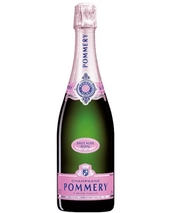 Pommery’s luxurious Rosé reinforces the notion that Champagne stands head and shoulder above other sparkling Rosés. The delicate salmon-pink color pleases they eye, but the real pleasure comes from the first whiff and sip. It delivers an impeccable balance of subtle, but persistent, wild strawberry-like nuances and creamy citrus ones.… Read more
Pommery’s luxurious Rosé reinforces the notion that Champagne stands head and shoulder above other sparkling Rosés. The delicate salmon-pink color pleases they eye, but the real pleasure comes from the first whiff and sip. It delivers an impeccable balance of subtle, but persistent, wild strawberry-like nuances and creamy citrus ones.… Read more
Albert Bichot, Crémant de Bourgogne (Burgundy, France) Brut Réserve NV
($24): 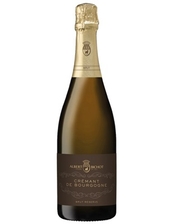 Albert Bichot, like many of Burgundy’s top producers, owns vineyards — is a grower — and acts as a négociant, buying grapes/and or newly pressed juice from other growers. This elegant and refreshing Crémant falls into the latter category. Its tiny bubbles dance on the palate. … Read more
Albert Bichot, like many of Burgundy’s top producers, owns vineyards — is a grower — and acts as a négociant, buying grapes/and or newly pressed juice from other growers. This elegant and refreshing Crémant falls into the latter category. Its tiny bubbles dance on the palate. … Read more
Villa Bucci, Castelli di Jesi Classico Superiore DOC (Marche, Italy) Verdicchio “Bucci” 2022
($24, Empson USA): 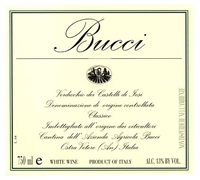 The Bucci family, farmers in the region from the 18th century, started bottling their wines only in 1983. They’ve rapidly shown themselves to be of the DOC’s top producers. Reasons why the wines are formidable is the age of the vines — mostly 40 to 50 years — and their parsimonious yields, which run about half of the quantity allowed by DOC regulations. … Read more
The Bucci family, farmers in the region from the 18th century, started bottling their wines only in 1983. They’ve rapidly shown themselves to be of the DOC’s top producers. Reasons why the wines are formidable is the age of the vines — mostly 40 to 50 years — and their parsimonious yields, which run about half of the quantity allowed by DOC regulations. … Read more
Villa Sandi, Valdobbiadene Superiore di Cartizze DOCG (Veneto, Italy) La Rivetta 2021
($50): 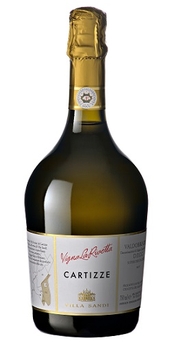 Cartizze is a small (roughly 260-acre) steeply sloped area of vineyards that represent the pinnacle of the Prosecco quality pyramid. And Sandi’s from their La Rivetta plot within Cartizze fits that perfectly. Oddly, though, Prosecco is nowhere to be found on the label, which is a common practice among Prosecco producers who bottle a Cartizze. … Read more
Cartizze is a small (roughly 260-acre) steeply sloped area of vineyards that represent the pinnacle of the Prosecco quality pyramid. And Sandi’s from their La Rivetta plot within Cartizze fits that perfectly. Oddly, though, Prosecco is nowhere to be found on the label, which is a common practice among Prosecco producers who bottle a Cartizze. … Read more
Skouras, Peloponnese PGI (Greece) Moscofilero 2021
($22, Diamond Wine Importers): 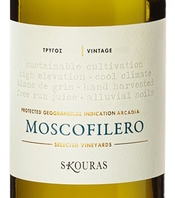 Moscofilero is a wonderfully interesting grape. Pink or grey-skinned, like Pinot Grigio, it usually makes a floral white wine. The aromatics make you think it will be sweet, but it’s not, which is part of the reason it is a joy to drink. … Read more
Moscofilero is a wonderfully interesting grape. Pink or grey-skinned, like Pinot Grigio, it usually makes a floral white wine. The aromatics make you think it will be sweet, but it’s not, which is part of the reason it is a joy to drink. … Read more
Mount Langi Ghiran, Grampians (Victoria, Australia) Riesling 2023
($23): 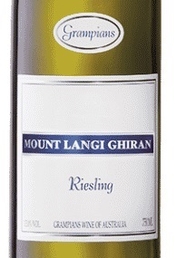 Mount Langi Ghiran, best known for their array of stunning Shiraz wines, makes an equally compelling Riesling. I know, isn’t Australia too hot for Riesling? Much of the country is, but Mount Langi Ghiran’s location in the cool Grampians district of Victoria is ideal for that grape — and of course, given their reputation, for Shiraz. … Read more
Mount Langi Ghiran, best known for their array of stunning Shiraz wines, makes an equally compelling Riesling. I know, isn’t Australia too hot for Riesling? Much of the country is, but Mount Langi Ghiran’s location in the cool Grampians district of Victoria is ideal for that grape — and of course, given their reputation, for Shiraz. … Read more
Lieb Cellars, North Fork of Long Island (New York) Pinot Blanc Estate 2022
($23): 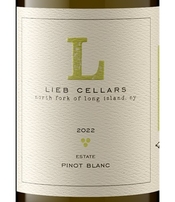 What a surprise! Pinot Blanc can often be dilute and uninspired. Not this one from Lieb Cellars, one of Long Island’s top producers. Yes, Long Island makes wine and very good wine at that, as evidenced by this Pinot Blanc. … Read more
What a surprise! Pinot Blanc can often be dilute and uninspired. Not this one from Lieb Cellars, one of Long Island’s top producers. Yes, Long Island makes wine and very good wine at that, as evidenced by this Pinot Blanc. … Read more
Raventós i Blanc, Conca del Riu Anoia (Penedes, Spain) “De Nit” Sparkling Rosé 2021
($25): 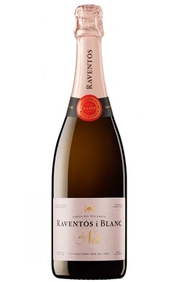 Raventós i Blanc, one of Spain’s leading producers of sparkling wines, left the Cava consortium because they felt the standards were too low. So, instead of bottling their excellent sparkling wines as Cava, they label them Conca del Riu Anoia, a new D.O. … Read more
Raventós i Blanc, one of Spain’s leading producers of sparkling wines, left the Cava consortium because they felt the standards were too low. So, instead of bottling their excellent sparkling wines as Cava, they label them Conca del Riu Anoia, a new D.O. … Read more
